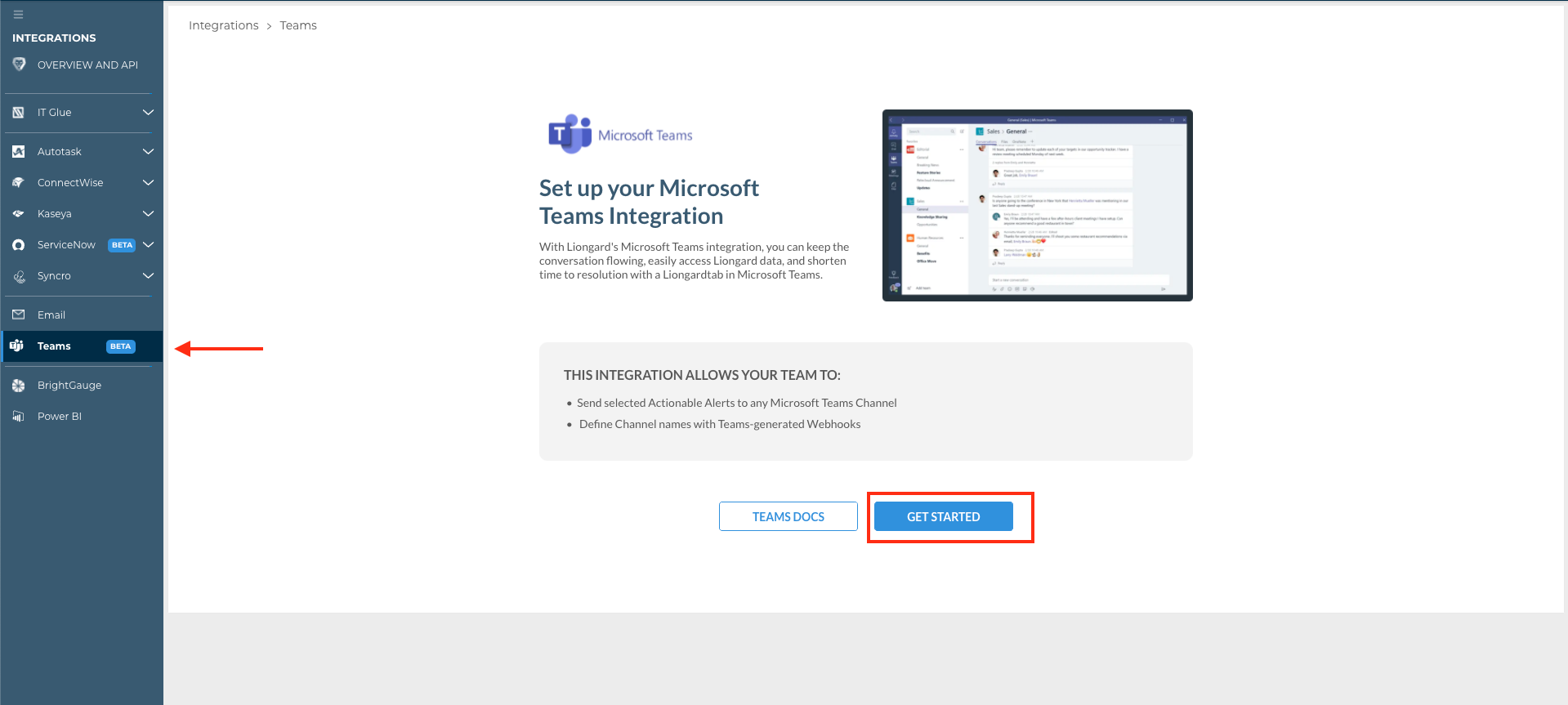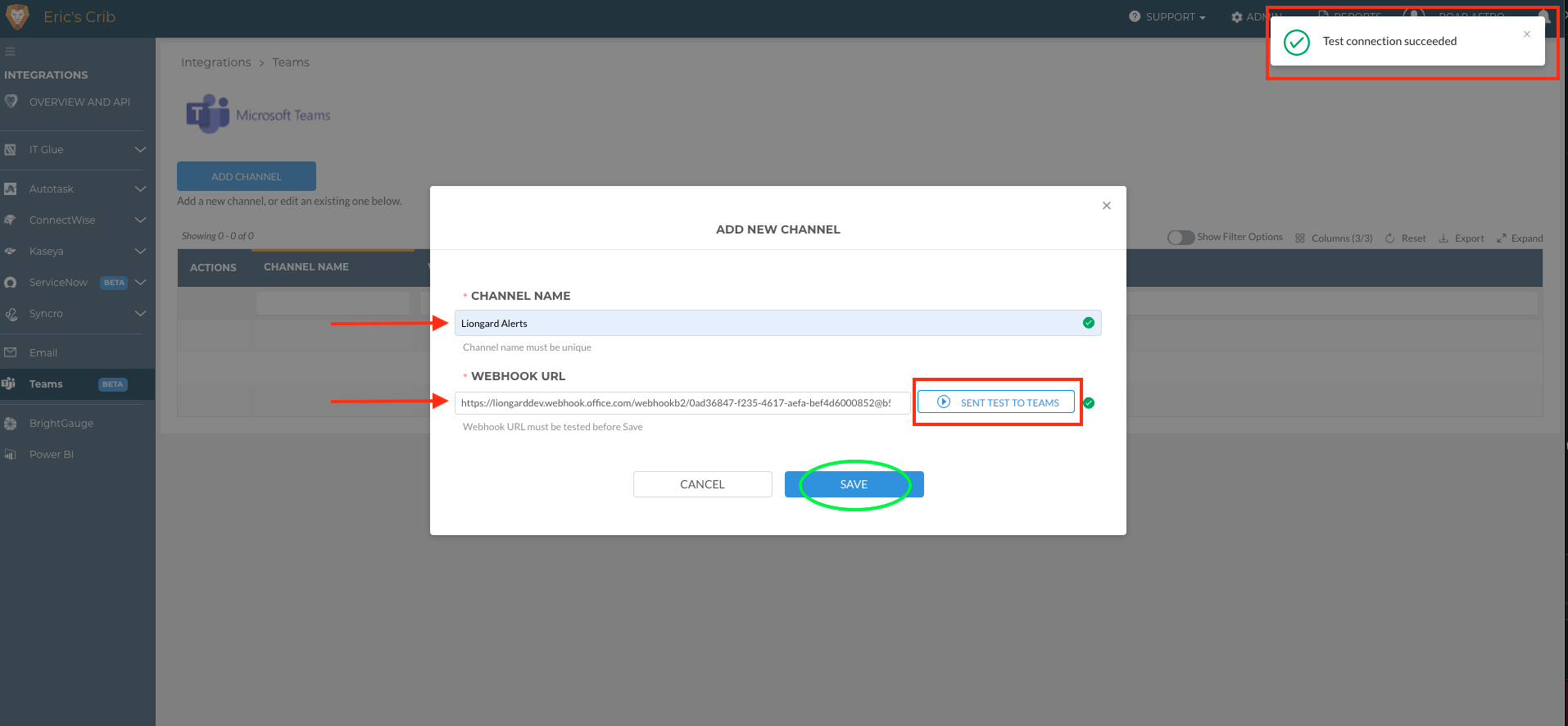Integrate Microsoft Teams with Liongard
Webhook CreationIf you have not created a Webhook URL in Microsoft Teams, review our documentation to create a Webhook URL in Microsoft Teams.
Integrate Liongard with Microsoft Teams
- In Liongard, navigate to Admin > Integrations > Microsoft Teams > Select Get Started

- Select Add Channel

-
Complete the following fields:
- Channel Name: The Identifier for the Webhook URL. This value needs to be unique.
- Webhook URL: This is the Webhook URL generated from Microsoft Teams
-
Use the Send Test to Teams button to ensure your Webhook URL is sending Actionable Alerts to the correct channel.
-
Select Save to add the channel.
-
Repeat this process for all channels you would like to integrate with Liongard.

Modify Existing Channels Integrated with Liongard
If you would like to modify or delete the Liongard integration with an existing channel, you can do so in the Actions column.
Deleting a ChannelDeleting a channel connected to an Actionable Alert template will stop Actionable Alerts from being sent to that channel. We recommend removing the channel from the Actionable Alert template.

Next Step
Updated 2 months ago
